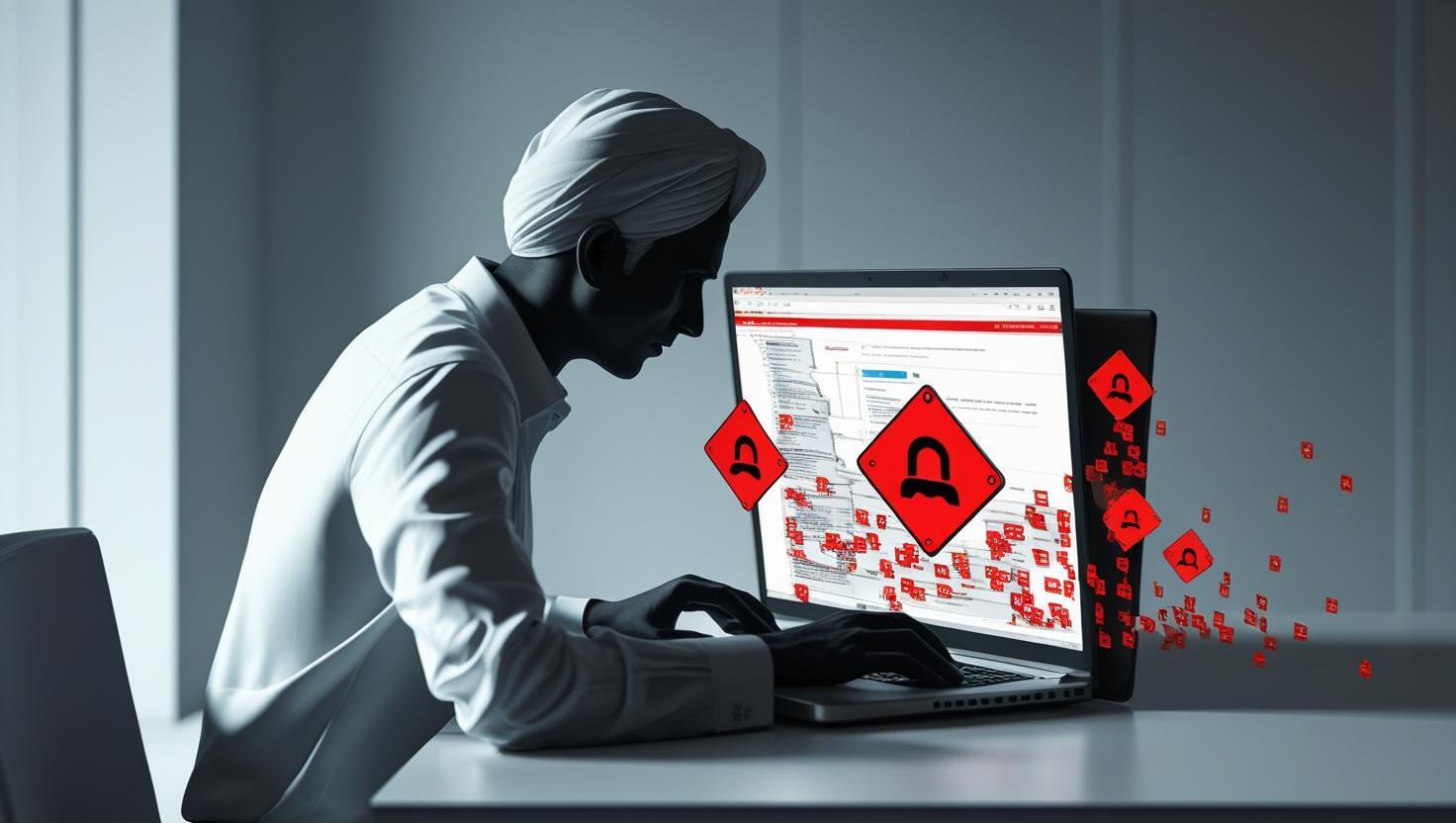
Introduction
Back in June 2025, the world of technology was shaken by a report from Bengaluru with spine-chilling implications: an angry ex-employee of a startup was able to cause massive destruction for their previous employer by erasing valuable company data. With a mere sequence of keystrokes, months of intellectual property, sensitive client data, and internal conversations were erased. Not only did the attack destroy business operations, but it also left the company with permanent damage to its credibility.
This event is not a one-off. Across the world, large and small businesses are struggling with the important but seldom asked question: What happens to your data when employees depart?
Whether the exit is amicable or abrupt, every departure comes with a potential data security risk. In this blog, we’ll explore the lifecycle of company data in the hands of employees, the risks associated with their departure, and the steps organizations can take to protect their most valuable asset: information.
Why Exits Pose a Unique Threat
Why Exits Pose a Unique Threat
Employee departures are unavoidable — individuals leave jobs, industries, or get terminated. However, the digital trail they create is not always accorded the same level of notice.
The majority of the employees have some level of access to their email accounts, customer databases, code repositories, shared drives, and communication platforms. Others have access to third-party applications, financial records, or even admin access. Such accesses, if not removed or managed meticulously, can become malicious loopholes.
The Human Factor
The Human Factor
There is a psychological factor at work here. Outgoing employees — particularly those who believe they have been treated badly — may do things in anger, or through fear, or even out of revenge. Such as the Bengaluru case, if an exit is ugly, the chances of deliberate sabotage skyrocket.
Conversely, even the most well-intentioned workers can unwittingly leave with confidential information. A sales director may keep customer contact lists in their head, assuming it's personal. A coder may copy code snippets into their portfolio. These may not be motivated by evil, but they are still dangers to data integrity and regulatory compliance.
The Remote Work Challenge
Remote work has made offboarding even more challenging. Remote employees are sitting at home, on their devices, with little visibility for IT teams. Without a robust exit process and tracking capabilities, it's too easy for information to be copied onto personal clouds, USB drives, or even screenshots sent through personal messaging.
Common Data Risks Post-Exit
1. Unauthorized Data Access
Once an employee has resigned, they remain able to use the system if credentials aren't quickly disabled. This is particularly dangerous with remote working arrangements, where access crosses several tools and devices.
Applications such as Slack, Dropbox, GitHub, and CRM tools are often overlooked when deactivating. A former employee may still be able to view roadmaps for projects or customer pipelines without even being noticed.
2. Data Deletion
Upset workers might delete documents from shared drives, erase email conversations, or delete papers from collaborative sites. Depending on what gets lost, this can create process mayhem.
Other times, deletion won't be realized right away. A spreadsheet deleted here, a slide deck deleted there—it could be weeks before someone notices it's gone, and by that time, recovery could be hopeless.3. Intellectual Property Theft
Staff usually have access to product plans, codebases, marketing strategies, and trade secrets. Should they switch to a competitor, the possibility exists that this information might be exploited.
This is not necessarily nefarious. Some staff are entitled to work they helped create and don't understand that it isn't theirs. Others wish to exhibit success in their portfolio and accidentally violate the rules.4. Compliance Violations
If sensitive information winds up on personal devices or is copied to non-protected storage, businesses can run afoul of serious regulatory actions, particularly in industries subject to legislation such as GDPR, HIPAA, or India's DPDP Act.
The mere forwarding of a single email containing personal data into a private inbox can prompt audits or legal warnings. Penalties are only part of the issue; reputational harm is frequently more difficult to regain.5. Institutional Knowledge Loss
Aside from security, when the employees leave, so does undocumented knowledge. Where the files are kept, how to read a particular report, who to go to for the client—the tacit but critical know-how leaves with them unless knowledge transfer is carefully planned.
Real-World Examples: When Things Went Wrong

Bengaluru Startup Meltdown
Let us go back to the infamous Bengaluru case. A former employee, disgruntled at being let go, exploited lingering access to wipe out company databases and emails. The company hadn't revoked credentials and lacked an immediate backup or archiving process. Result? Data gone for good, internal turmoil, and public humiliation.

Morgan Stanley
Morgan Stanley
Even big institutions, however are not exempt. Morgan Stanley once publicly disclosed that a former employee had stolen client data and stored it on personal devices. Although the breach was managed, it showed how human mistakes and poor decision-making around offboarding threaten client trust.

The Snapchat Leak
The Snapchat Leak
A Snapchat employee was phished by an email and sent payroll information to an impostor. Although this was not an instance of an ex-employee, it highlights how data access, when left exposed, can have dire consequences.

GitLab Developer Incident
A GitLab system administrator accidentally deleted a database containing critical production data. The issue wasn’t malicious, but due to mismanaged access and lack of recent backups, it took several hours to recover. Imagine if a disgruntled former employee had done the same.
Prevention Starts with Policy
The best time to protect data is before someone leaves. Having a clear and enforceable offboarding process is critical.
A Good Offboarding Checklist Must Have:
Instant cancellation of all access credentials
Inventory of devices issued by the company and data access points
Exit interview with a data responsibility focus
Legal contracts defining data confidentiality after employment
Technical provisions to audit and monitor the latest activities
Scheduled knowledge transfer sessions with replacement staff
An IT audit to examine logs for any suspicious activity before and after the exit.
Tech to the Rescue: Tools That Help
1. Email Archiving
Most businesses are unaware that employee email is a goldmine of information — customer chat, internal communication, and project documents. When an employee departs, their mailbox tends to be a black hole if not properly managed.
That is where Email Archiving solutions step in. These solutions automatically archive all emails (sent and received) within a tamper-proof space, allowing easy access, search, and auditing of past communications — even after account deletion. 2. Cloud Storage for Emails
2. Cloud Storage for Emails
Cloud communication is what contemporary work mostly depends on. Google Workspace or Microsoft 365 provides Cloud Storage for Emails, which means organizations can store data even after an employee leaves. Transferring the data to another account or administrator becomes possible with the right setup.
3. Data Backup Solutions
3. Data Backup Solutions
Whether it's email, documents, or databases, backing up regularly is your net of protection. With Data Backup Solutions, even if a malicious user erases something, you can restore it instantly without wasting precious time or losing trust.
4. Email Compliance
4. Email Compliance
Regulated industries such as finance, healthcare, and legal services are subject to strict regulation. A proper Email Compliance means your organization remains on the right side of the law. This involves keeping messages for at least a specified period, encryption, access logging, and audit trails.
5. Data Retention Policy
Every company needs a clear Data Retention Policy. This sets out what data has to be retained, for how long, and when it must be securely deleted. This minimizes legal risk and makes sure ex-employee information isn't mishandled.
Building a Culture of Security
Policies and tools are only so far as they go. Building a culture of security and trust goes a long way.
Educate workers on their role regarding data, from when they first start working to when they retire.
Automatically review access to sensitive documents and refresh permissions.
Promote openness so that when a mistake is made, it's caught and corrected soon.
Reward good security behavior visibly to reinforce good habits.
Legal & Ethical Considerations
In India, data protection laws are evolving rapidly. The Digital Personal Data Protection (DPDP) Act now holds organizations accountable for how they manage personal and sensitive data. Failing to secure data after an employee leaves could lead to significant penalties.
Moreover, companies must balance data protection with privacy. Ex-employee data — especially emails or personal identifiers — must be handled ethically and not misused.
Keep records, notify leaving staff of what will happen to their information, and keep records safe according to legal guidelines. Future-Proofing Your Business
Future-Proofing Your Business

As the workplace continues to go remote and turnover speeds up, businesses must change. Here's how to future-proof your data security plan:
1. Automate Offboarding
Employ identity and access management (IAM) software that takes away access automatically when HR marks an employee as exiting. This eliminates the flexibility of human error.
2. Role-Based Access Control (RBAC)
Limit employees to what they need access to. A junior employee who does not require database access should not have it. This minimizes the blast radius in the event of a breach.
3. Endpoint Security
Deploy endpoint security software to all business devices. These can remotely track, lock, or wipe data in the event of misuse.
4. Shadow IT Monitoring
Employees use unauthorized applications to complete work in less time. Such applications may not be observed by the IT department, thus posing a threat. Utilize monitoring software to identify and prohibit such activities.
5. Post-Exit Audits
Perform a complete digital audit whenever the essential people exit. Investigate file access history, sent emails before exit, and any suspicious activity. This provides you with a more comprehensive understanding of possible data leakage.
6. Develop a Healthy Exit Culture
How people exit your organization is important. A respectful culture, open communication, and fairness are great ways of mitigating resentment-based data risk.
Do empathetic exit interviews. Support people through transition. Acknowledge contributions. All this generates goodwill and mitigates the sabotage risk. What Employees Should Know
This is not solely a company issue. Employees also need to know their share of responsibilities:
Do not take client lists, code, or confidential files without authorization.
Understand that data created during your job likely belongs to the company.
Exit gracefully and honestly. A bad exit can harm your reputation and prospects.
Always clarify what you can take as personal work samples versus proprietary company assets.
FAQs
Q: What should be done on an employee’s last working day to secure data?
A: Revoke all system access, collect company devices, ensure backups of all data they handled, and start a knowledge transfer to relevant team members.
Q: Can employees legally keep work they contributed to, like code or designs?
A: Generally, no. Unless otherwise stated in a contract, work created during employment belongs to the employer.
Q: How can small businesses protect against data theft by ex-employees?
A: Implement simple but strict offboarding protocols, use cloud services with logging and access control, and educate employees regularly about data handling.
Q: What legal actions can companies take if data is stolen?
A: Depending on jurisdiction, they can file civil or criminal charges. Non-disclosure agreements (NDAs) can also help with legal recourse.
Q: Should companies inform clients about breaches caused by ex-employees?
A: Yes, transparency is key. Clients should be informed promptly, with clear communication about the steps being taken to rectify and prevent future breaches.
Key Takeaways
Employee exits are a major vulnerability point in data security.
Both intentional and unintentional data leaks can occur post-exit.
Real-world cases highlight the need for proactive offboarding strategies.
Tools like Email Archiving, Cloud Storage for Emails, Data Backup Solutions, Email Compliance, and Data Retention Policy can greatly reduce risks.
Creating a culture of respect and trust during exits lowers the likelihood of sabotage.
Regular audits, role-based access, and legal safeguards are essential for protection.
Conclusion
Data is the currency of modern business. When employees leave — whether they’re interns, senior executives, or contract staff — the way you handle that transition can mean the difference between seamless continuity and irreversible damage.
The Bengaluru case is a warning tale, not only for startups but for any company moving through the dynamic arena of workforce mobility. The perfect mix of policy, technology, and culture can assure that your company doesn't merely survive — but prospers, even amidst change.
So the next time a notice is handed in, don't just organize a goodbye lunch. Ask yourself: What becomes of your data when they leave through that door?Protect your data before it walks out the door — talk to our experts today.
https://www.delphiinfo.com/customer-support-contact-number

